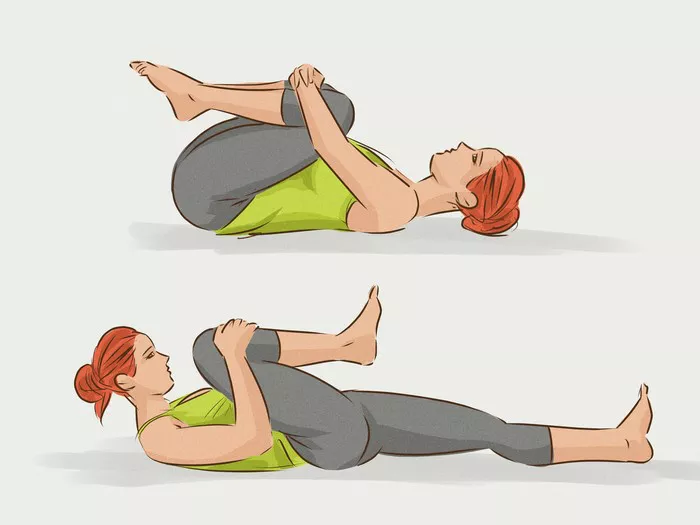Yoga is an ancient practice that integrates physical, mental, and spiritual disciplines to achieve a state of harmony and balance. One of the common questions among yoga practitioners, especially beginners, is whether it is advisable to practice yoga on an empty stomach. This article delves into the benefits, potential drawbacks, and best practices for doing yoga without eating beforehand.
The Benefits of Practicing Yoga on an Empty Stomach
Improved Digestion and Detoxification
Practicing yoga on an empty stomach can significantly enhance the body’s natural detoxification processes. When the stomach is empty, the body’s energy is not diverted towards digestion, allowing it to focus on cleansing and healing. Many yoga poses, especially twists and forward bends, stimulate the digestive organs and promote the elimination of toxins. This can lead to improved digestion and overall gastrointestinal health.
Enhanced Energy Flow
Yoga aims to cultivate and balance the body’s vital energy, known as prana. Practicing on an empty stomach ensures that this energy is not used up in the digestion process. This can lead to a more invigorating and effective practice, as the body can channel its energy towards the physical and mental demands of yoga.
Increased Focus and Mindfulness
Yoga is as much a mental practice as it is a physical one. An empty stomach can help enhance mental clarity and focus. Without the distraction of digestion, practitioners can attain a deeper state of mindfulness and concentration. This can make meditation and breathing exercises more effective, contributing to a holistic yoga experience.
See Also: Can We Do Pranayama Before Yoga?
Optimal Comfort and Performance
Practicing yoga on a full stomach can lead to discomfort, bloating, and even nausea, especially during poses that involve twisting, bending, or inversions. An empty stomach minimizes these risks, allowing for a more comfortable and enjoyable practice. This can be particularly beneficial for practitioners who engage in intense or advanced yoga styles, where physical exertion is higher.
Potential Drawbacks of Yoga on an Empty Stomach
Risk of Dizziness and Fatigue
While practicing yoga on an empty stomach has its benefits, it can also pose certain risks, particularly for individuals who are new to yoga or those with specific health conditions. One of the main concerns is the potential for dizziness or fatigue. Without any food intake, blood sugar levels can drop, leading to light-headedness or fainting during practice. This is especially true for morning yoga sessions after a long overnight fast.
Decreased Performance in High-Intensity Yoga
High-intensity yoga styles, such as power yoga or Ashtanga, require substantial energy and stamina. Performing these vigorous exercises on an empty stomach might result in decreased performance and endurance. For practitioners of these styles, a small, easily digestible snack before practice might be necessary to maintain energy levels.
Impact on Muscle Recovery and Growth
Yoga, particularly when practiced vigorously, involves muscle exertion and can lead to muscle fatigue. An empty stomach might not provide the necessary nutrients and amino acids required for muscle recovery and growth. This can be a concern for those who use yoga as part of their fitness and strength training regimen.
Best Practices for Yoga on an Empty Stomach
Timing Your Meals
The timing of your meals is crucial when planning to practice yoga on an empty stomach. It is generally recommended to wait at least 2-3 hours after a full meal before starting your practice. This allows sufficient time for digestion and ensures that your stomach is empty, yet you have enough energy from the previous meal.
Hydration is Key
While practicing yoga on an empty stomach, it is essential to stay hydrated. Dehydration can exacerbate feelings of dizziness and fatigue. Drink water before your practice, but avoid excessive consumption just before starting to prevent discomfort.
Light Snacks for Energy
If you find it challenging to practice on a completely empty stomach, consider having a light, easily digestible snack about 30-60 minutes before your session. Options such as a banana, a handful of nuts, or a small smoothie can provide the necessary energy without causing discomfort.
Listen to Your Body
The most important aspect of practicing yoga is to listen to your body. Everyone’s metabolism and energy needs are different. Pay attention to how your body feels during practice and adjust your meal timings and food choices accordingly. If you experience dizziness or fatigue, it might be a sign that you need a small snack before your session.
Gradual Adjustment
If you are new to practicing yoga on an empty stomach, start gradually. Begin with shorter sessions and less intense poses to allow your body to adapt. Over time, you can increase the duration and intensity of your practice as your body becomes accustomed to the new routine.
Expert Opinions on Yoga and Fasting
Yogic Tradition
According to traditional yogic texts and teachings, practicing yoga on an empty stomach is recommended. The early morning, just before sunrise, is considered an ideal time for yoga practice. This aligns with the body’s natural rhythms and allows for a more profound and spiritual experience. The practice of yoga on an empty stomach is believed to enhance the connection between the body, mind, and spirit.
Modern Nutritionists
Modern nutritionists and health experts offer a balanced perspective. They acknowledge the benefits of practicing yoga on an empty stomach but also emphasize the importance of individual needs and preferences. For some individuals, especially those with metabolic conditions or high energy requirements, a light snack might be necessary to sustain energy levels during practice.
Conclusion
Practicing yoga on an empty stomach can offer numerous benefits, including improved digestion, enhanced energy flow, increased focus, and optimal comfort during practice. However, it is essential to be mindful of potential drawbacks such as dizziness, fatigue, and decreased performance in high-intensity yoga styles. By timing your meals appropriately, staying hydrated, and listening to your body, you can find a balance that works best for your individual needs.
Ultimately, the decision to practice yoga on an empty stomach should be based on personal experience and comfort. Experiment with different approaches and observe how your body responds. Whether you choose to practice on an empty stomach or with a light snack, the goal is to cultivate a mindful and enriching yoga practice that supports your overall well-being.
Related topics:



















